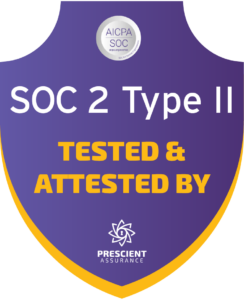Understanding Strict Liability Insurance Gaps

Complex liability insurance landscapes present unique challenges, but strict liability coverage stands apart as specialized protection for businesses facing heightened exposure to no-fault claims. Understanding what strict liability means in legal and insurance contexts is essential for risk management professionals. Unlike traditional liability policies requiring proof of negligence, strict liability applies regardless of fault—creating distinct challenges for insurance advisors.
This guide examines strict liability insurance core components, helping insurance professionals navigate complexities to better serve clients in high-risk industries. We’ll explore the strict liability insurance definition, compare negligence strict liability scenarios, and discuss how strict liability protects consumers from specific risks.
What Is Strict Liability?
Strict liability refers to legal responsibility applied without proof of negligence or intent to harm. Under the doctrine of strict liability, certain activities are deemed inherently dangerous enough that conducting parties bear automatic responsibility for damages. This concept clarifies what is strict liability and why it’s necessary in certain situations.
Key Elements of Strict Liability
- No proof of negligence required—injured parties don’t need demonstrating defendant carelessness
- Automatic liability—responsibility assigned based on activity itself, not conduct
- Limited defenses available—traditional liability defenses often don’t apply
Industries Commonly Subject to Strict Liability
Strict liability applies to which activities? It most frequently affects businesses in:
- Manufacturing (product liability)
- Construction
- Chemical processing
- Blasting operations
- Hazardous materials transportation
- Pest control services
- Food production and distribution
Regarding strict liability, which is considered an inherently dangerous activity? Activities like blasting, storing large hazardous material quantities, and certain construction types often fall into this category.
How Strict Liability Insurance Works
Strict liability insurance provides financial protection against claims where fault is automatically presumed. This specialized coverage steps in where standard general liability insurance policies may contain exclusions for activities subject to strict liability rules.
Coverage Triggers
Unlike standard liability policies triggered by negligence, strict liability insurance responds when:
- The insured engages in covered activity subject to strict liability
- Harm or damage results from this activity
- Causal connection exists between activity and harm
Policy Structure
Most strict liability insurance programs involve:
- Primary coverage—first-line financial protection
- Excess layers—additional limits above primary policies
- Umbrella policies—broader coverage that may drop down filling gaps
Types of Strict Liability Claims
Product Liability
Product liability represents the most common strict liability exposure. Manufacturers, distributors, and retailers face automatic responsibility for injuries caused by defective products. This is where strict liability vs product liability distinctions become important.
Case Study: Product Liability Application
A medical device manufacturer produced insulin pumps. Despite rigorous testing, design defects caused dosage errors in 0.1% of units. Several patients suffered insulin overdoses.
Though the manufacturer followed all industry standards and FDA protocols, strict liability applied because:
- The product was unreasonably dangerous when used as intended
- The defect existed when leaving manufacturer control
- The defect caused injuries
Manufacturer strict liability insurance covered defense costs and settlements exceeding $3.5 million. This case illustrates how strict liability product liability claims arise and proper insurance coverage importance.
Abnormally Dangerous Activities
Activities classified as “abnormally dangerous” trigger strict liability when causing harm, even when performed with reasonable care. These activities often lead to strict liability lawsuits.
Examples include:
- Demolition work
- Storing large flammable material quantities
- Transporting toxic chemicals
- Using explosives
Animal Ownership
In many jurisdictions, certain animal owners face strict liability for injuries they cause. This applies particularly to:
- Wild animals kept in captivity
- Dog breeds classified dangerous in certain jurisdictions
- Animals with known dangerous tendencies
Policy Exclusions and Limitations
Strict liability policies typically contain significant exclusions that insurance professionals must identify when structuring coverage. Understanding these liability exceptions is crucial for proper risk management.
Common Exclusions
- Intentional acts—deliberate regulation violations
- Criminal activity—illegal operations or transactions
- Known conditions—pre-existing contamination or hazards
- Contractual liability—assumed liabilities beyond legal impositions
- Regulatory fines/penalties—government-imposed sanctions
Policy Limitations
Coverage restrictions often include:
- Claims-made limitations—coverage applies only if claims made during policy periods
- Retroactive date restrictions—no coverage for incidents before specified dates
- Limits structure—per-occurrence and aggregate limits cap recovery
- Self-insured retentions—insured must pay initial portions of each claim
Pricing Factors for Strict Liability Coverage
Underwriters evaluate several factors when pricing strict liability insurance:
| Factor | Impact on Premium |
|---|---|
| Industry classification | High-risk industries face substantially higher base rates |
| Claims history | Prior strict liability claims significantly increase premiums |
| Revenue exposure | Larger operations typically pay more due to increased exposure |
| Geographic location | Jurisdictions with favorable plaintiff laws increase costs |
| Risk management protocols | Robust safety programs may reduce premiums |
| Coverage limits | Higher limits increase premium proportionally |
Risk Management Strategies
Insurance professionals can help clients reduce strict liability exposure through comprehensive risk management approaches. These strategies focus on enhancing accountability and minimizing inherent risks.
Product Risk Management
For manufacturing clients:
- Implement thorough quality control processes
- Maintain detailed testing procedure documentation
- Develop comprehensive product warnings and instructions
- Establish product recall protocols
- Create document retention policies for design specifications
Operational Risk Controls
For clients with inherently dangerous operations:
- Conduct regular safety audits
- Document industry standards compliance
- Implement engineering controls minimizing risks
- Develop emergency response procedures
- Train employees on safety protocols
Contractual Risk Transfer
When possible, use:
- Indemnity agreements with suppliers and vendors
- Hold harmless agreements with customers
- Waivers where legally enforceable
- Additional insured endorsements
The Regulatory Landscape
Text
State-by-State Variations
- Some states apply strict liability broadly
- Others limit application to specific industries
- Damage caps may apply in certain jurisdictions
- Statute of limitations differs by state
Federal Regulatory Overlay
Several federal regulations create strict liability exposure:
- Comprehensive Environmental Response, Compensation, and Liability Act (CERCLA)
- Resource Conservation and Recovery Act (RCRA)
- Oil Pollution Act
- Federal Employers’ Liability Act (FELA)
Coverage Gaps and Solutions
Standard insurance programs often contain gaps in strict liability protection. Identifying these gaps is crucial for comprehensive risk management.
Identifying Coverage Gaps
- Review existing policies for strict liability exclusions
- Analyze operations for uninsured exposures
- Identify problematic policy language or definitions
- Evaluate aggregate limits adequacy
Solutions for Comprehensive Protection
- Manuscript policy endorsements targeting specific exposures
- Specialized excess policies for high-risk operations
- Captive insurance arrangements for difficult-to-place risks
Real-World Applications of Strict Liability Insurance
Environmental Contamination
A chemical distributor experienced storage tank leaks contaminating groundwater. Despite following all safety regulations and having no prior incidents, the company faced strict liability under CERCLA.
Their environmental impairment liability policy provided:
- Legal defense costs
- Cleanup expenses
- Third-party bodily injury claims
- Property damage restoration
- Business interruption coverage
Text
Foodborne Illness
A restaurant faced strict liability claims after customers contracted foodborne illness. Despite proper food handling procedures, the restaurant was strictly liable for injuries caused by contaminated food.
Their specialized food contamination policy covered:
- Medical expenses for affected customers
- Business interruption during investigation
- Public relations expenses
- Recall costs for implicated products
Best Practices for Insurance Advisors
When working with clients facing strict liability exposures:
- Conduct thorough operations reviews identifying all potential strict liability activities
- Analyze existing policies for exclusions and limitations
- Explain distinctions between negligence-based and strict liability claims
- Recommend appropriate coverage structures based on exposure
- Suggest risk management protocols minimizing frequency and severity
Conclusion
Strict liability presents unique challenges for insurance professionals and their clients. Unlike traditional liability frameworks, strict liability applies regardless of fault—creating exposure requiring specialized coverage and risk management approaches.
By understanding strict liability insurance nuances, coverage options, and risk control strategies, insurance professionals can provide clients comprehensive protection against these challenging exposures. This includes addressing concerns related to strict liability in real estate, manufacturer liability, and various liability theories.
Which of the following is correct regarding strict liability coverage for defective products? It’s important noting that strict liability often applies even when manufacturers have taken reasonable precautions, emphasizing the need for robust insurance coverage and risk management strategies.
For additional resources on specialized liability coverage solutions, including professional liability insurance and product liability insurance, contact Total CSR for expert guidance tailored to your agency’s needs. Remember, proper insurance coverage is a key component of consumer protection and can help businesses navigate the complex landscape of strict liability claims and judgments.


